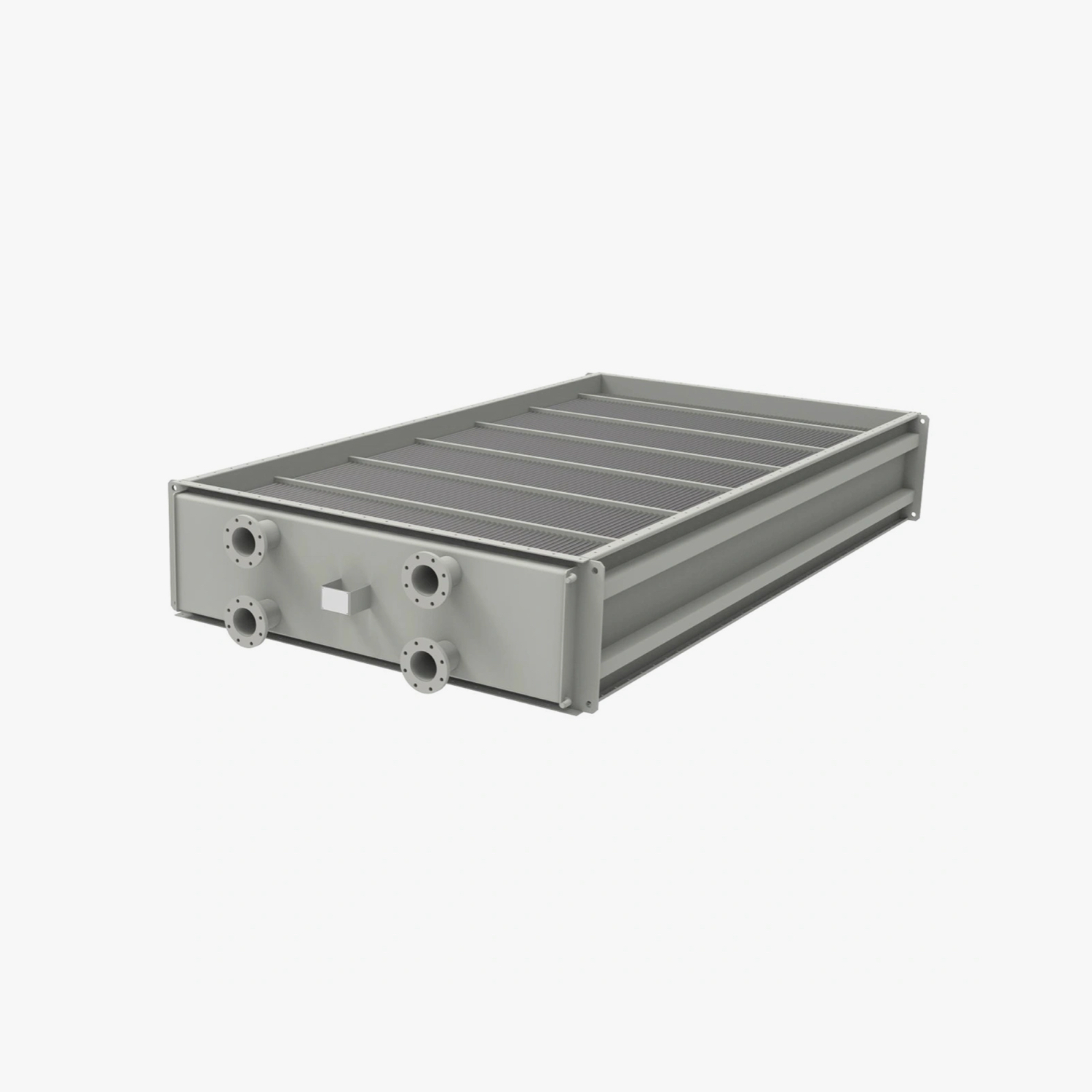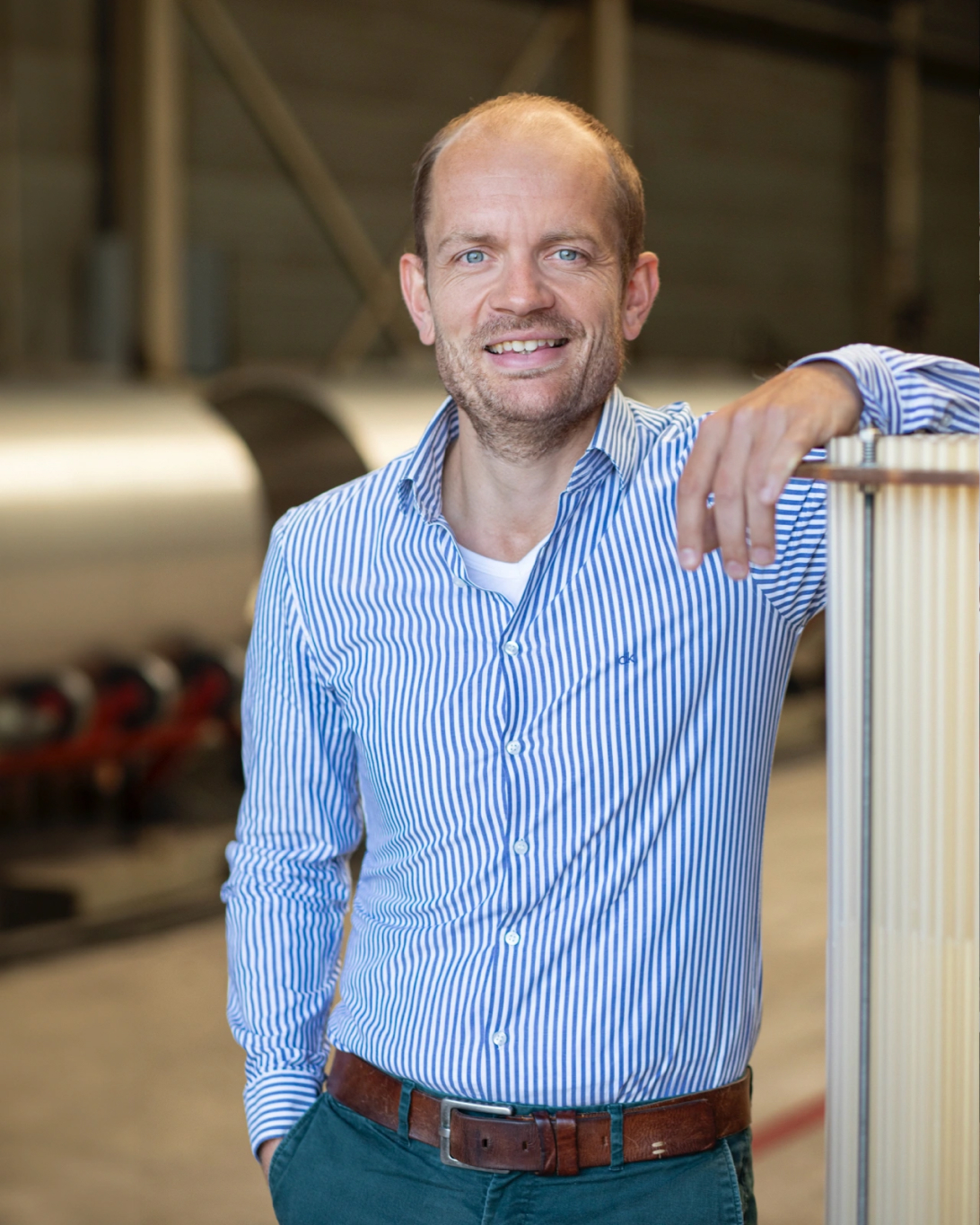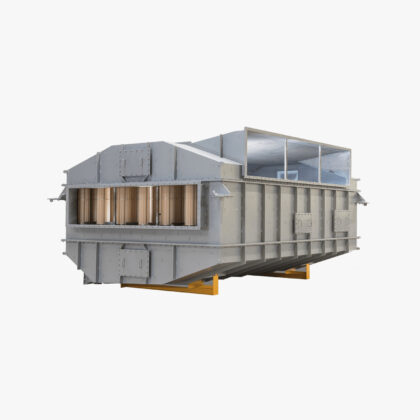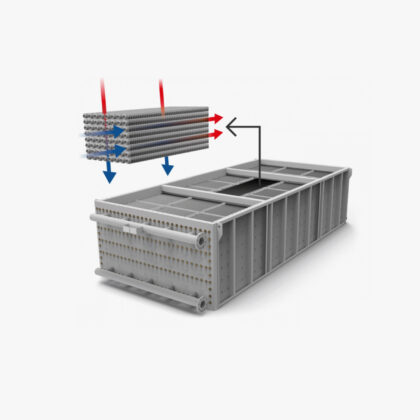Condensor
Heat recovery at low flue gas temperatures
A condenser is a gas/liquid heat exchanger used from 80°C with flue gas or drying air. It condenses water vapour and recovers both sensible and latent heat at relatively low temperatures.

Where are condensers applied?
Condensers are often used in steam boilers and dryers, sometimes in combination with an upstream economiser. This type of heat exchanger uses phase transition to extract energy from low temperatures. The output is very suitable for low-temperature consumers.
Engineered for:
- Steam boilers
- Dryers
- Furnaces
- Thermal oil boilers
For the preheating of:
- Process water
- Boiler feedwater
- Cleaning water
- Heat pump input
The operating principle of a condenser
A condenser is usually made of stainless steel tubes. (Flue) gas flows around the tube, at a higher temperature than the wall of the tube. As a result, the gas will release its heat through the wall to the cold water in the pipe, creating condensate (water) on the flue gas side. A condenser can therefore recover not only the tangible heat but also the latent heat (heat released during condensation) from the flue gases, thereby improving the efficiency. The heat recovered from the condenser can then be reused in business processes.
Benefits and gains
- You recover a substantial amount of energy at a relatively low temperature. (The water dew point of most gaseous streams is between 40 and 70⁰C).
- The condensation energy in a drying air stream is approximately equal to the evaporation energy fed into the dryer. Applying a condenser thus leads to an energy efficiency improvement and lowers your CO2 emissions.
Condenser models
Condensers can be built in various configurations
Construction materials
- Stainless steel
- Polymer
Tube types
- Standard
- Finned
Cleaning options
- In-line cleaning system
- No cleaning system
ONTWERPKEUZE
What design is the best match for you?
Depending on the application, a specific design is needed. Condensers come into contact with moisture or water, which can cause corrosion. Corrosion can also result from low pH values due to acids present in the flue gas. Corrosion-resistant materials are therefore necessary in almost all condensers for proper operation.
Your flue gas or drying air is clean
If the drying air or flue gas is (virtually) free of dust particles, a compact condenser design is sufficient. In this case, the condenser is made of stainless steel.
Your flue gas is corrosive
Due to the phase transition in a condenser, liquid water is present by definition. This is why a condenser is usually made of stainless steel. Corrosive components in the drying air or in the flue gas determine what type of stainless steel should be used. Sometimes, plastic cladding is required.
Your flue gas, baking fumes or drying air is contaminated
If the flue gas is contaminated, a cleaning system may be necessary. Sometimes, self-cleaning can be used instead. When the flue gas flows vertically through the condenser, we can ensure that the condensate has a self-cleaning effect on the pipes. The condensate is separated from the cooled gas through the lower section of the condenser and discharged.
Condenser by flue gas type
Contaminating flue gases
Condenser for flue gases containing baking fumes or dusty dry air.
-
MaterialPolymer or stainless steel
-
Type Standard
-
Cleaning Inline
Corrosive flue gases
Condenser for flue gases containing corrosive elements.
-
MaterialPolymer or stainless steel
-
Type Standard
-
Cleaning Inline
Natural gas-fired flue gas
Condenser for flue gases without corrosive or contaminating elements.
-
MaterialStainless steel
-
CleaningManual
Other types of heat exchangers
Besides the air preheater, there are other types of heat exchangers that we regularly use in the heat recovery projects we carry out for clients.

Contact
Curious about your savings potential?
A Heat Recovery Scan gives you quick insight into the most promising concepts for heat recovery, energy savings, reduction of CO2 emissions and payback period.

